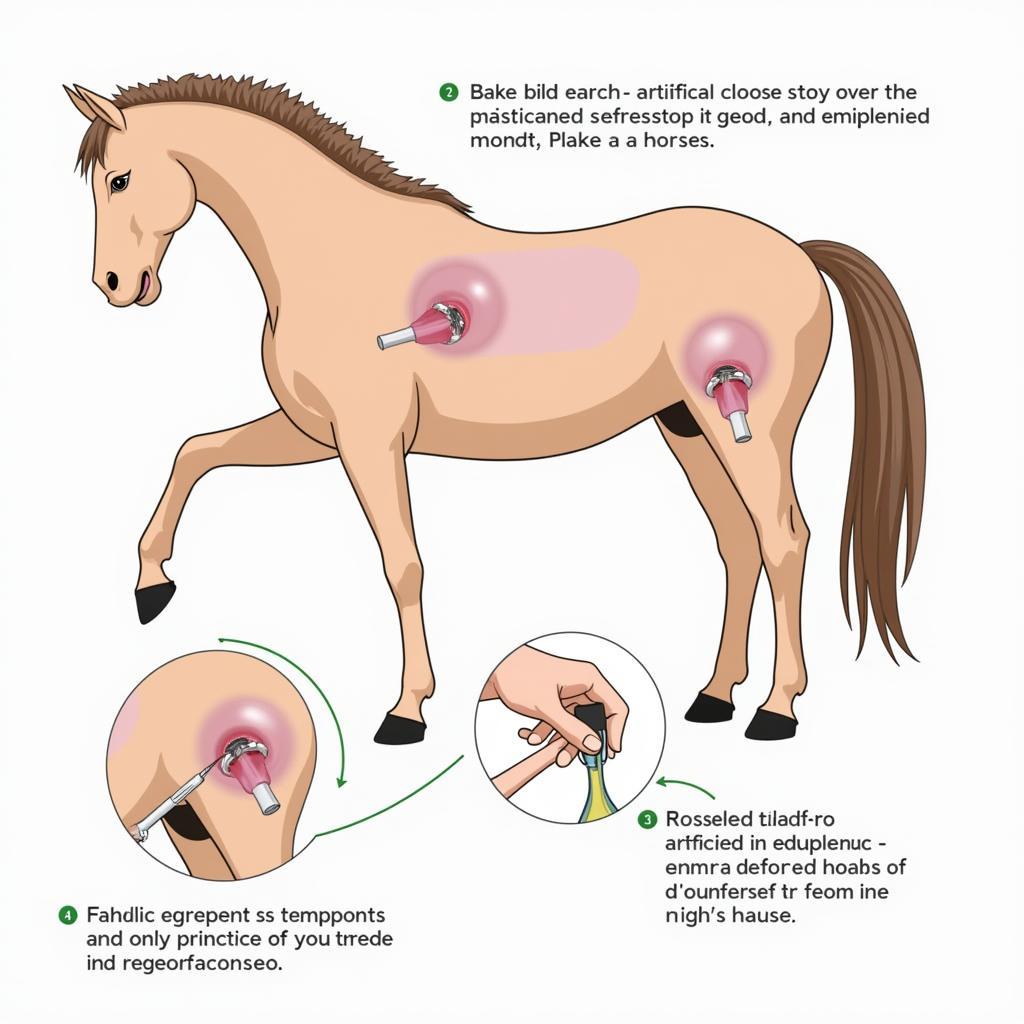Horse Tricycle Reproduction is a fascinating, albeit misunderstood, topic. While the term itself suggests a biological impossibility, it often arises from genuine curiosity about equine breeding and the unique challenges faced by breeders. This article aims to clarify the confusion surrounding “horse tricycle reproduction” and provide accurate information about equine reproduction.
Debunking the Myth of Horse Tricycle Reproduction
Let’s address the elephant in the room: horse tricycle reproduction doesn’t exist. Horses, like all mammals, reproduce sexually, requiring a male (stallion) and a female (mare) for fertilization to occur. The term “tricycle” likely stems from a misunderstanding or misinterpretation of breeding practices or perhaps a humorous take on the complexities of equine reproduction.
What Influences Equine Reproduction?
Several factors influence successful equine reproduction. Understanding these factors is crucial for breeders aiming to produce healthy foals. These key elements include:
- Mare Fertility: A mare’s reproductive cycle is complex, influenced by age, health, and seasonal changes.
- Stallion Fertility: Stallion health, semen quality, and libido are crucial for successful breeding.
- Breeding Management: Proper timing of breeding, appropriate mating techniques, and post-breeding care are essential.
- Nutrition: Adequate nutrition for both the mare and stallion plays a vital role in reproductive health and successful pregnancies.
- Veterinary Care: Regular veterinary checkups, including reproductive examinations and disease screenings, are paramount.
The Reality of Equine Breeding: Natural and Assisted Methods
Equine breeding can occur naturally through live cover or with assistance through artificial insemination (AI). Both methods have their advantages and disadvantages. Live cover is the traditional method, allowing horses to interact naturally. However, it carries risks of injury and disease transmission. AI offers more control over the breeding process, allowing breeders to select specific stallions and minimize risks.
Artificial Insemination in Horses
AI involves collecting semen from a stallion and then depositing it into the mare’s uterus during her fertile period. This method allows breeders greater flexibility and access to genetically superior stallions, regardless of geographical location.
 Artificial Insemination in Horses
Artificial Insemination in Horses
Challenges in Equine Reproduction
Equine reproduction, while natural, can present challenges. Mares may experience difficulties conceiving or carrying a foal to term. Stallion fertility can also be a concern. Breeders must be prepared to address these challenges with the help of experienced veterinarians and reproductive specialists.
- Early Embryonic Loss: A significant challenge in equine reproduction is early embryonic loss, which can occur within the first few weeks of pregnancy.
- Twin Pregnancies: While rare, twin pregnancies in horses are high-risk and often result in miscarriage or premature birth.
Genetic Considerations in Horse Breeding
Breeders often consider specific genetic traits when selecting breeding pairs. These traits can range from conformation and athletic ability to temperament and coat color. Understanding the principles of equine genetics is crucial for making informed breeding decisions and achieving desired outcomes.
“Understanding the intricacies of equine reproduction is crucial for responsible breeding,” says Dr. Emily Carter, DVM, a leading equine reproductive specialist. “It’s about more than just producing foals; it’s about ensuring the health and well-being of both the mare and the offspring.”
Another expert, John Miller, an experienced horse breeder with over 30 years of experience, adds, “Breeding horses is a rewarding but demanding endeavor. It requires patience, dedication, and a deep understanding of equine reproductive physiology.”
Conclusion
While the term “horse tricycle reproduction” is a misnomer, it underscores the importance of accurate information about equine breeding. By understanding the complexities of equine reproduction, we can dispel myths and promote responsible breeding practices that prioritize the health and welfare of these magnificent animals. Remember, responsible breeding is essential for preserving the future of the equine population.
FAQ
- How long is a horse’s gestation period? (Approximately 11 months)
- What is the best time of year to breed a mare? (Spring and early summer)
- What are some common signs of pregnancy in a mare? (Lack of estrus, increased appetite, changes in behavior)
- How soon after foaling can a mare be bred again? (Typically within a few weeks, depending on her health and condition)
- What are some common reproductive problems in horses? (Early embryonic loss, twin pregnancies, dystocia)
- What is the role of a veterinarian in equine reproduction? (Monitoring mare and stallion health, performing reproductive examinations, providing breeding advice)
- What are the ethical considerations of horse breeding? (Ensuring the well-being of the animals, avoiding overbreeding, promoting responsible ownership)
Need help with your equine breeding program? Contact us at Phone Number: 0772127271, Email: [email protected] Or visit us at: QGM2+WX2, Vị Trung, Vị Thuỷ, Hậu Giang, Việt Nam. We have a 24/7 customer service team.